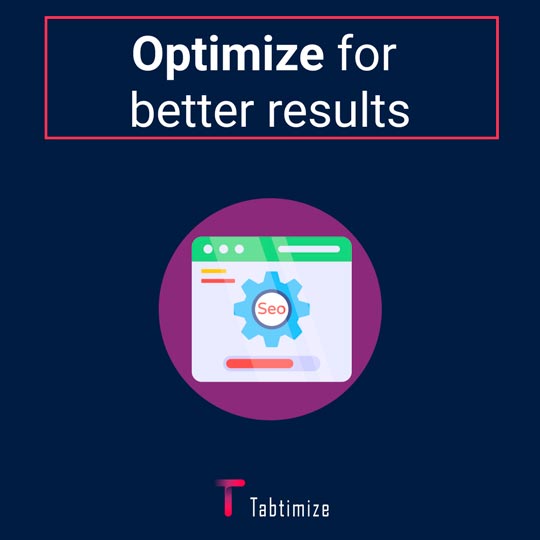SEO content is online content that is designed to rank well in search engines like Google. Writing SEO content is not only about using keywords, but also about creating engaging, informative, and relevant content that matches the search intent of your target audience.
Search intent is the goal or purpose behind a search query. For example, someone searching for “how to write better SEO content” is looking for a guide or a tutorial, not a product page or a sales pitch.
Understanding and satisfying the search intent of your potential customers is crucial for SEO success in 2024 and beyond. Google’s algorithm is constantly evolving to provide the best possible answers to users’ questions, and you need to keep up with the latest trends and best practices to stay ahead of the competition.
In this article, we will show you how to write better SEO content in 2024 by following these seven steps:
- Choose a topic that your target audience cares about
- Find a keyword that has high search volume and low competition
- Research the SERPs and analyze the top-ranking pages
- Write an SEO-friendly title, URL, and meta description
- Write the content using the inverted pyramid method
- Optimize the content for readability, relevance, and user experience
- Add images, videos, and other multimedia elements to enhance your content
Let’s dive into each step in more detail.

Step 1: Choose a topic that your target audience cares about
The first step in writing better SEO content is to choose a topic that your target audience cares about. You want to write about something that solves their problems, answers their questions, or satisfies their needs.
There are many ways to find topic ideas for your SEO content, such as:
- Reddit: Browse subreddits related to your niche and look for popular posts, comments, and questions.
- Competitor blogs: Check out what topics your competitors are covering and how they are performing in terms of traffic, engagement, and backlinks.
- Personas: Create personas of your ideal customers and think about what kind of content they would search for online.
- Keyword tools: Use keyword research tools like Ubersuggest or Keyword Insights to generate hundreds of keyword ideas based on your seed keyword.
For example, let’s say you run a blog about digital marketing. You can use whatever SEO tool with a keyword tool built in to find keyword ideas related to “digital marketing” and filter them by search volume, difficulty, and trend.
As you can see, some of the keyword ideas are “digital marketing strategy”, “digital marketing trends”, “digital marketing agency”, and so on. These are potential topics that you can write about on your blog.
Step 2: Find a keyword that has high search volume and low competition
The next step is to find a keyword that has high search volume and low competition. This means that the keyword is popular among your target audience and has relatively few competing pages in the SERPs.
You can use the same keyword tools from the previous step to find such keywords. For example, using Ubersuggest, you can sort the keyword ideas by search volume and difficulty and look for keywords that have a high volume (over 1000) and a low difficulty (under 40).
As you can see, one of the keywords that meet these criteria is “digital marketing examples”. This keyword has a monthly search volume of 2400 and a difficulty score of 24. This means that there is a decent demand for this topic and it is not too hard to rank for it.

Step 3: Research the SERPs and analyze the top-ranking pages
The third step is to research the SERPs and analyze the top-ranking pages for your chosen keyword. This will help you understand what kind of content Google prefers for this query (the search intent) and what you need to do to outrank them.
You can use tools like Ahrefs or Moz to analyze the SERPs and get insights into various metrics like domain authority, page authority, backlinks, social shares, word count, etc.
As you can see, using Ahrefs, you can see the top 10 results for “digital marketing examples” along with their metrics. You can also see how they match the search intent of the query.
For example, most of the results are blog posts or articles that provide examples of digital marketing campaigns or strategies from different industries or niches. They also use listicles or case studies as formats to present their content.
This tells you that if you want to rank for this keyword, you need to create a similar type of content that provides valuable and relevant examples of digital marketing.
Step 4: Write an SEO-friendly title, URL, and meta description
The fourth step is to write an SEO-friendly title, URL, and meta description for your content. These are the elements that appear in the SERPs and influence whether users click on your result or not.
Your title, URL, and meta description should:
- Include your target keyword (preferably at the beginning)
- Be clear, concise, and catchy
- Communicate the value and benefit of your content
- Match the search intent of the query
- Use power words, numbers, or brackets to increase click-through rate
For example, a good title, URL, and meta description for your content could be:
Title: 15 Digital Marketing Examples That Will Inspire You in 2024
URL: https://www.yourblog.com/digital-marketing-examples
Meta description: Looking for some digital marketing examples to inspire your next campaign? Here are 15 amazing examples of digital marketing from different industries and niches in 2024.
Step 5: Write the content using the inverted pyramid method
The fifth step is to write the content using the inverted pyramid method. This is a journalistic technique that involves presenting the most important information at the beginning of your content and then providing more details as you go along.
The inverted pyramid method helps you:
- Grab the attention of your readers and keep them engaged
- Provide a clear and concise overview of your main points
- Make your content easy to scan and skim
- Improve your chances of ranking for featured snippets
The inverted pyramid method consists of three parts:
- Lead: This is the first paragraph of your content that summarizes the main idea and answers the who, what, when, where, why, and how questions.
- Body: This is the main part of your content that provides more details, explanations, examples, facts, statistics, quotes, etc. to support your main idea. You should use headings, subheadings, bullet points, images, videos, etc. to organize your content and make it more readable.
- Conclusion: This is the last paragraph of your content that wraps up your main points and provides a call to action or a takeaway for your readers.
For example, using the inverted pyramid method, you can write your content like this:
Lead: Digital marketing is constantly evolving and changing. To stay ahead of the curve, you need to keep an eye on the latest trends and best practices. In this article, we will show you 15 digital marketing examples that will inspire you in 2024. These examples are from different industries and niches and showcase how to use various digital marketing channels and strategies to achieve your goals.
Body: Here are the 15 digital marketing examples that will inspire you in 2024:
- Example 1: How Netflix used email marketing to increase retention and loyalty
- Example 2: How Airbnb used influencer marketing to boost brand awareness and bookings
- Example 3: How Nike used social media marketing to create a viral campaign and drive sales
- Example 4: How Spotify used content marketing to create personalized playlists and recommendations
- Example 5: How Amazon used SEO to dominate organic search and e-commerce
- Example 6: How Starbucks used mobile marketing to create a loyalty program and increase customer satisfaction
- Example 7: How Tesla used video marketing to showcase its products and vision
- Example 8: How Apple used podcast marketing to promote its services and devices
- Example 9: How Coca-Cola used experiential marketing to create memorable events and experiences
- Example 10: How Lego used user-generated content to engage its fans and customers
- Example 11: How Zappos used customer service marketing to create a loyal fan base and word-of-mouth referrals
- Example 12: How HubSpot used inbound marketing to attract, convert, close, and delight its prospects and customers
- Example 13: How Shopify used email marketing to educate its users and increase conversions
- Example 14: How Buffer used social media marketing to build trust and transparency with its audience
- Example 15: How Canva used content marketing to provide value and education to its users
These are some of the best digital marketing examples that will inspire you in 2024. As you can see, digital marketing is not a one-size-fits-all approach. You need to experiment with different channels and strategies to find what works best for your business and audience. The key is to be creative, innovative, and customer-centric.

Step 6: Optimize the content for readability, relevance, and user experience
The sixth step is to optimize the content for readability, relevance, and user experience. This means that you need to make sure that your content is easy to read, understand, and enjoy by both humans and search engines.
Some of the ways to optimize your content for readability, relevance, and user experience are:
- Use short sentences and paragraphs
- Use transition words and phrases
- Use active voice instead of passive voice
- Use simple words instead of jargon or technical terms
- Use synonyms or semantic-related keywords instead of repeating the same keyword over and over
- Use headings, subheadings, bullet points, images, videos, etc. to organize your content and make it more readable
- Use internal and external links to provide more information and resources to your readers
- Use schema markup to add structured data to your content and increase your chances of getting rich snippets
- Use tools like Grammarly, Hemingway, or ChatGPT to check your spelling, grammar, punctuation, readability, and relevance
- Use tools like Yoast, Rank Math, Ahref, or Semrush to check your SEO score and get suggestions for improvement
Bottom Line
Writing better SEO content in 2024 is not a difficult task if you follow the seven steps we have outlined in this article. These steps are:
- Choose a topic that your target audience cares about
- Find a keyword that has high search volume and low competition
- Research the SERPs and analyze the top-ranking pages
- Write an SEO-friendly title, URL, and meta description
- Write the content using the inverted pyramid method
- Optimize the content for readability, relevance, and user experience
- Add images, videos, and other multimedia elements to enhance your content
By following these steps, you will be able to create engaging, informative, and relevant content that matches the search intent of your potential customers and ranks well in Google.
We hope you enjoyed this article and learned something new. If you did, please share it with your friends and colleagues who might benefit from it.



